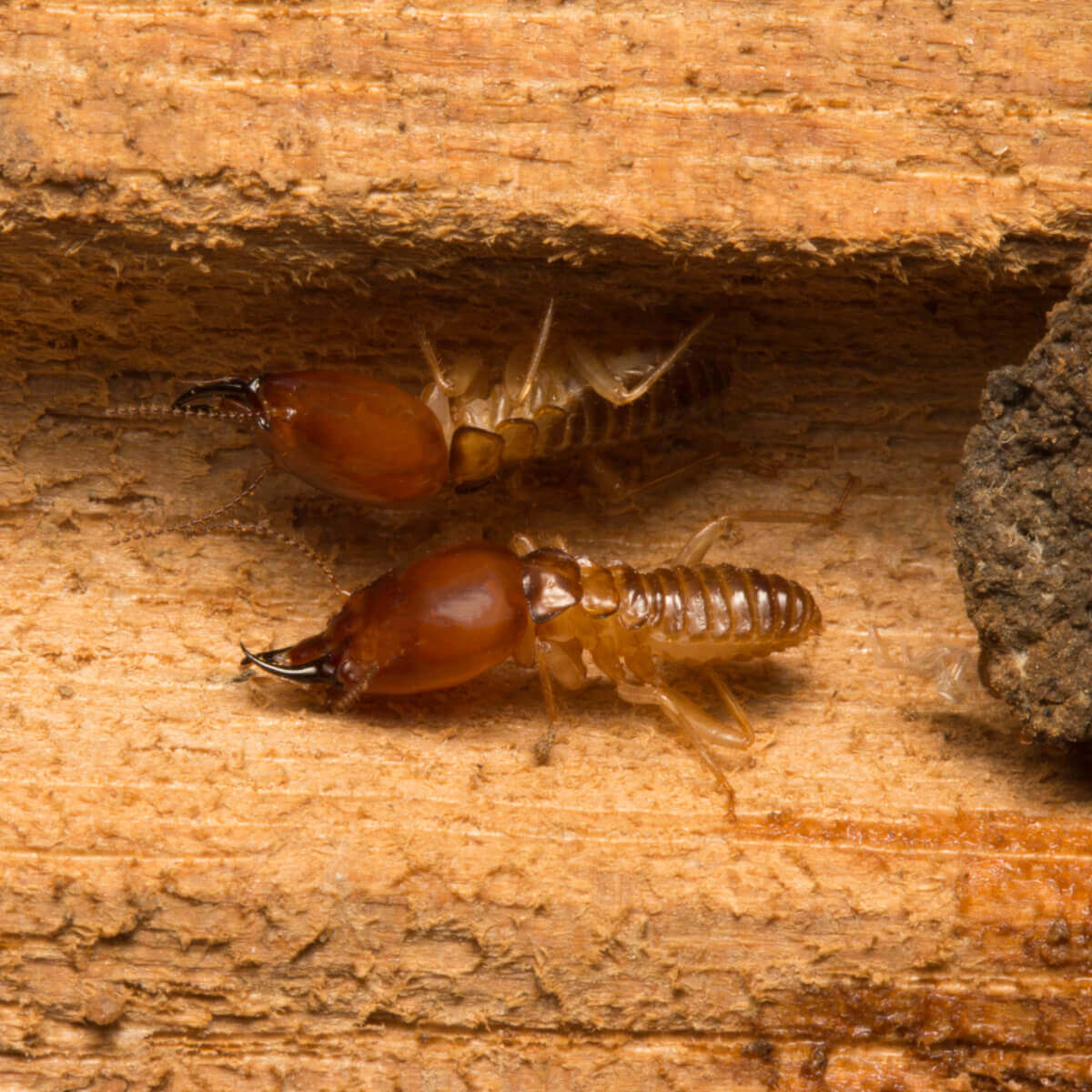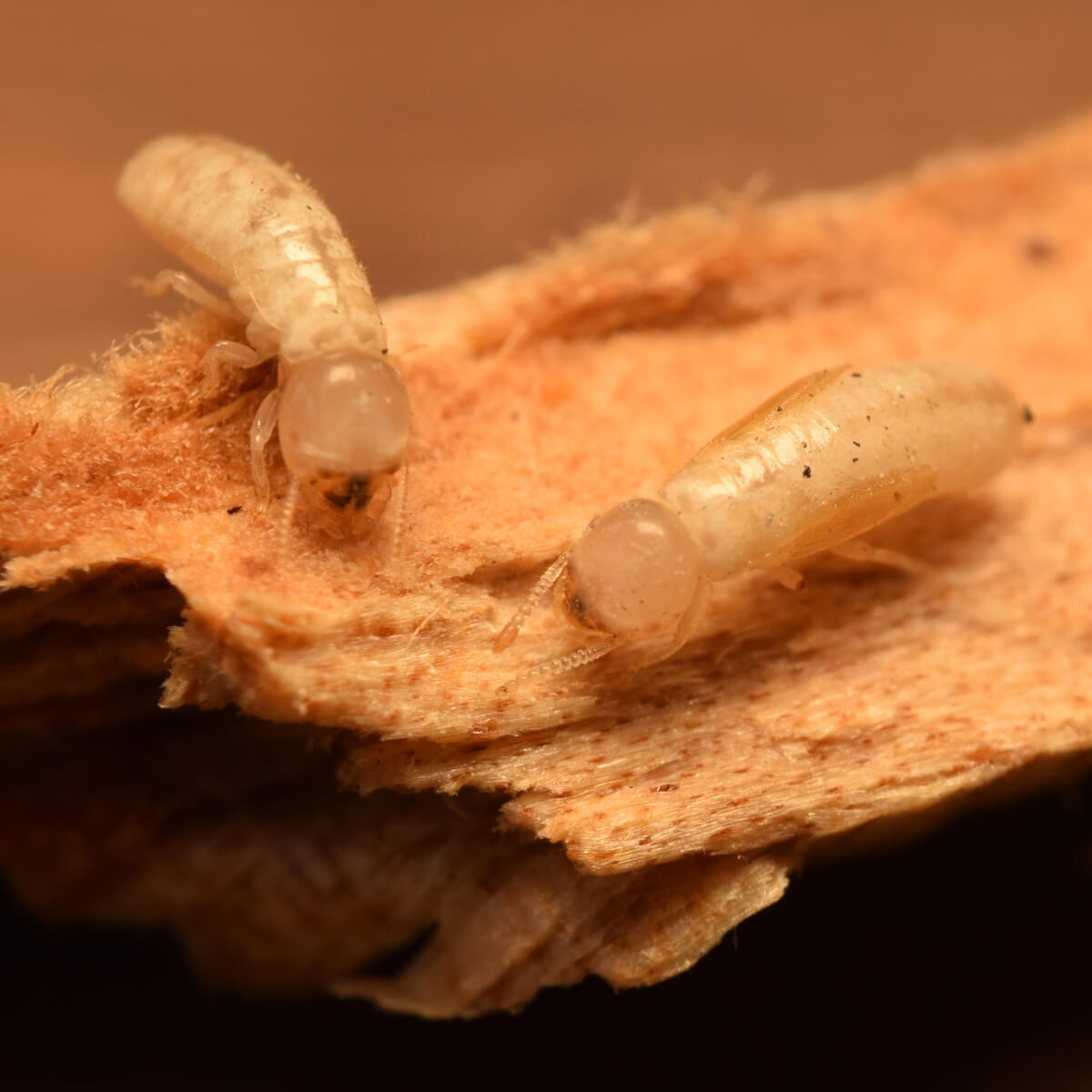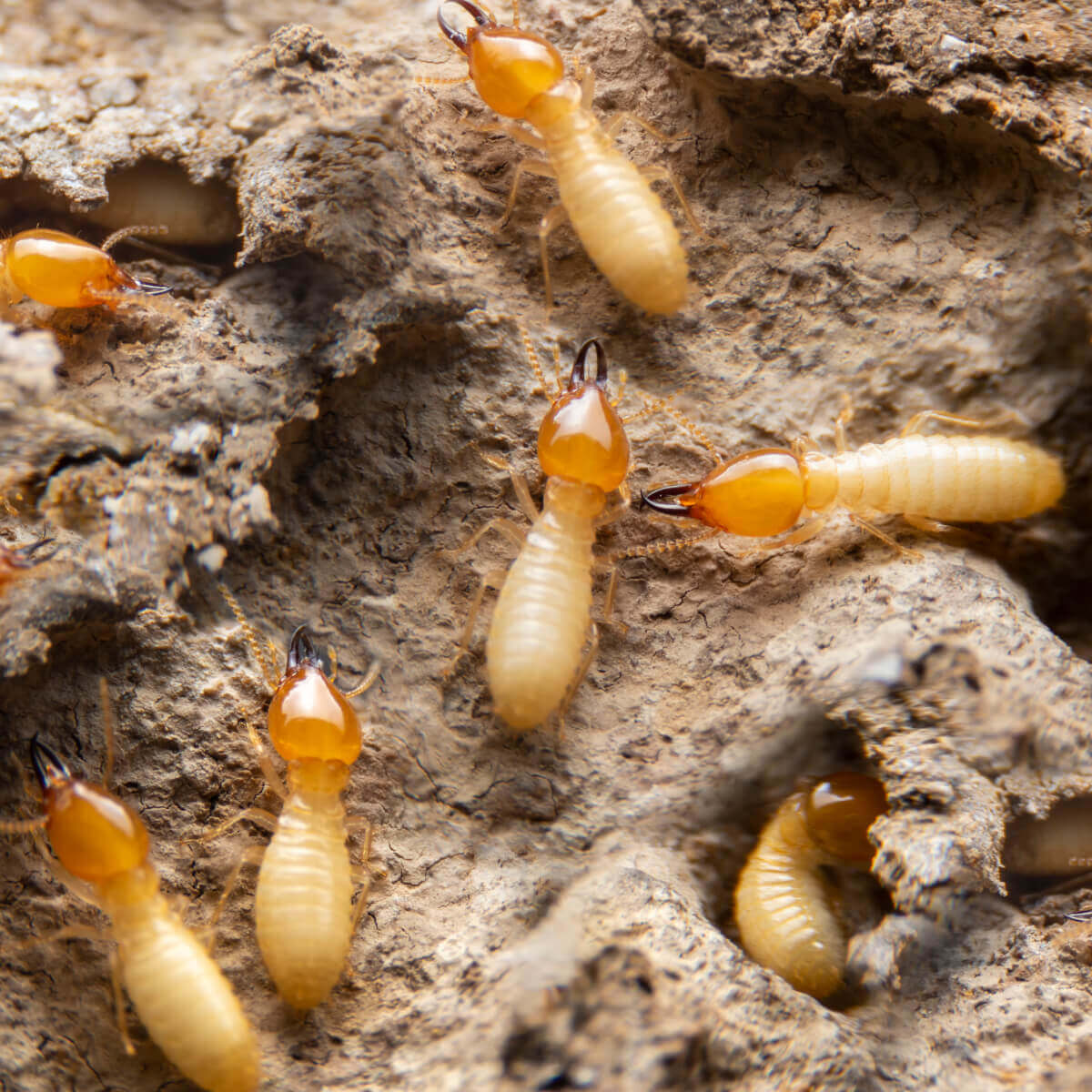Termites
Termites (also called white ants) are social insects that are more closely related to cockroaches rather than to ants. They're famous for their very destructive habits. Wood is a big part of termites' diet and even though only a handful of termite species in Australia cause economic damage, said damage ranges in the billions.
Termites are very widespread - it's estimated 1 in every 5 homes in Australia either has or has had a termite infestation in the recent past. Out of the 360 species of termites in Australia, only a handful are responsible for that damage, but surely that’s more than enough.
Species of termites in Australia
Termite castes
Even though termites are often compared to ants, they are actually natural enemies. However, they do bear some similarities in the way they structure their colonies. Like ants, termite colonies are divided into castes with their distinct characteristics and roles:
- Termite king and queen - Unlike ants, termites have a reproductive royal couple. The duo is responsible for adding new workers and soldiers to the colony. Usually, they release pheromones to keep the other termites sterile. Every once in a while, other reproductive couples hatch into the mound, and they fly away to find a new colony. The royal couple spends their entire lives sealed away in the royal chamber. A termite queen can lay an egg every 15-20 seconds. Because termites never sleep, you do the math.
- Termite soldiers - They are tasked with guarding the colony, fighting off invaders, and warning others if there is danger nearby. Soldiers bang their heads against the tunnel walls. Other colony members feel the vibrations and get an early warning when there's a present danger. Some species are equipped with a special weapon in the form of a fontanellar gun. This is a growth in the front of their heads connected to a gland that allows them to shoot a sticky, acid-like substance to ward off enemies. Even though termite soldiers have no eyes, they have the ability to shoot this substance with pinpoint accuracy.
- Termite workers - The role of a worker is very important. They are tasked with taking care of the nest, the young, and the royal couple. They tie the whole thing together.
Interesting facts about termites
Termites tap to warn the colony of any threats - Probably one of the most interesting warning methods in the insect kingdom, soldier termites hit their heads on the walls of the nest to warn the others about any incoming threats. By doing this, they send warning vibrations through the walls of the nest.
They are very well maintained - White ants are very well-groomed. Although they live in the dirt, it’s really important for the well-being of the colony. White ants groom themselves to keep the hygiene in the colony on a high level.
It’s believed they’ve roamed the Earth for the last 150 million years! - That’s right, scientists say that termites have been on Earth 80 million years before the dinosaurs disappeared.
Termite colonies can coexist - You can often see a couple of colonies living within one acre of land between them. They coexist and don’t intermingle. However, if someone goes into the premises of the other colony, the little creature will be immediately killed and removed.
Read more on the topic of Fascinating Facts About Termites
Signs of a termite infestation
The signs of a termite infestation present themselves relatively early on if you know what you're looking for.
- Timber damage - Termites are not the only source of wood damage in your home, but they are among the usual suspects. If you notice damage on doors and windows, or even something sounding hollow, you may have a termite problem.
- Having trouble opening/closing doors and windows - If you notice well-fitted doors and windows are suddenly not so well fitted may be an indication you have termites. The materials they use for the tunnels cause wood to absorb more moisture and thus expanding.
- Finding "mud" - The materials used for the tunnels mentioned above are actually termite excrements. It looks like mud. Noticing something like this in your home, especially close to timber, is an almost clear indication you have a termite problem.
Check out further: Signs of Bed Bug Infestation
What to do in case of a termite infestation
Termites aren't easy to detect. If it's obvious you have termites, then the infestation is so far gone, it will be the least of your worries. Termites can damage the foundations of your house, so we recommend having a termite inspection at least once a year. If you already suspect something is up, give us a call immediately so we can act on time.


